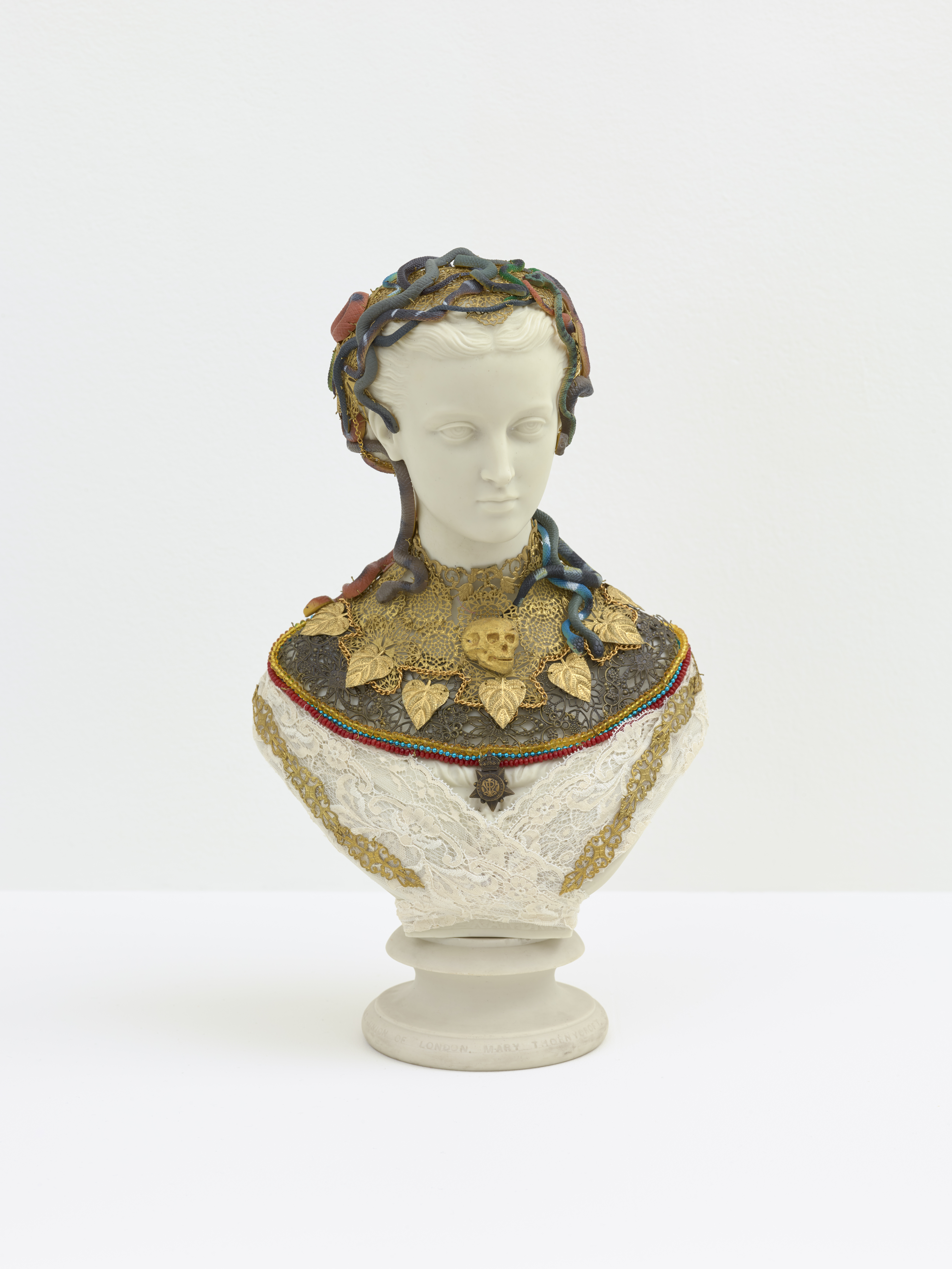Hew Locke, who is known for his large-scale installations, explores themes of power, relationships, monuments and identity. By taking different symbols and putting them in conversation with each other, he gives space for a greater understanding of iconography. Public statuary, coats of arms and weaponry are revealed and recontextualised.
Hew Locke’s Souvenirs series (2018-present) explores the national nostalgia for the Imperial past. The series grew from his collection and research into Parian busts of Queen Victoria and other worthies. Popularised at the Great Exhibition in 1851, Parian ware was an innovative imitation marble produced on a mass scale, allowing middle-class Victorians to proudly display statuary in their homes. Locke masks the royal busts with opulent crests, crowns, talismans, trade-beads, memento mori and military insignia. The burden of colonial history is conveyed through physically weighing down each sovereign. In Souvenirs, Locke encourages a greater understanding of iconography, contributing to the current conversation regarding the future of public statues with complex legacies. Instead of destroying or ignoring, Locke transforms statues in order to reveal and re-contextualise them.
Princess Alexandra of Denmark (1844-1925) married Albert Edward, Prince of Wales in 1863 when she was eighteen years old and the original bust was probably made following the wedding. She became Queen consort of the United Kingdom and the British Dominions and Empress consort of India in 1901 when Albert Edward ascended the English throne as King Edward VII (1841-1910) following the death of Queen Victoria.


